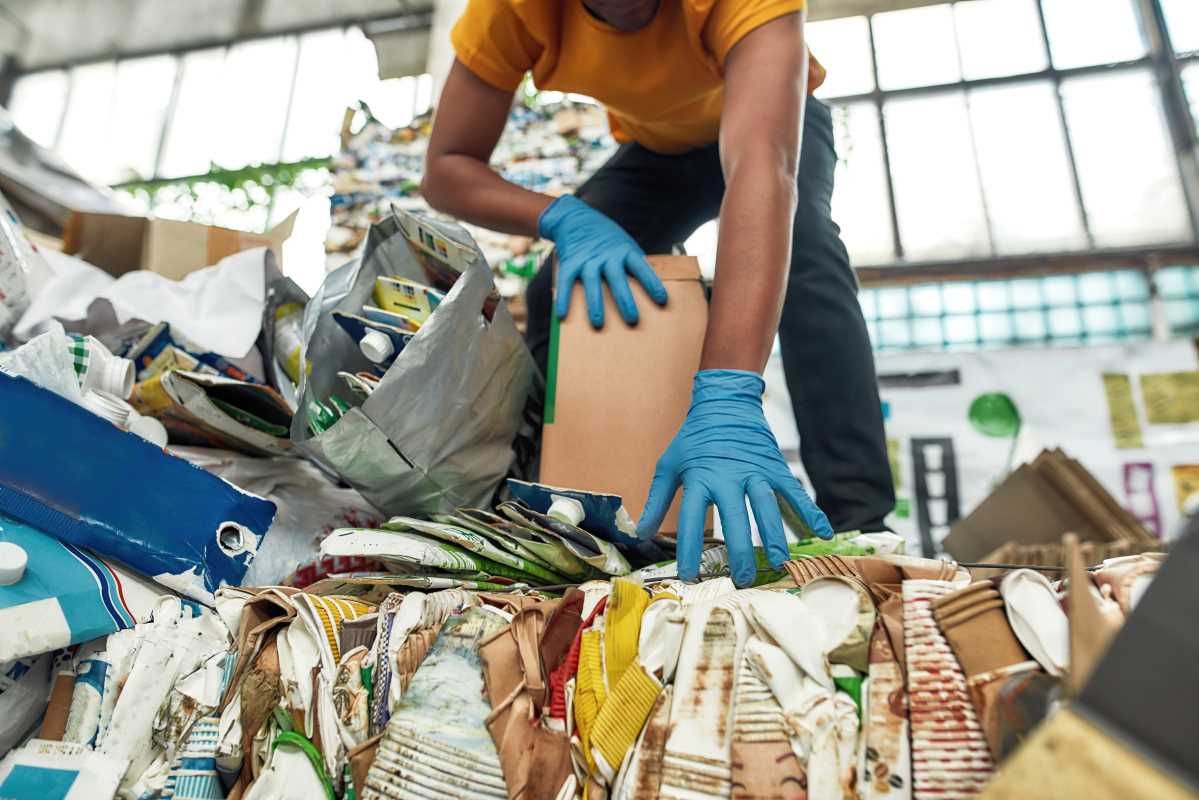Recycling is one of the most effective ways to combat environmental challenges like waste accumulation, resource depletion, and pollution. However, current recycling systems face limitations such as contamination, inefficiency, and high operational costs. Technological advancements are set to revolutionize recycling processes, making them more efficient, sustainable, and scalable. Innovations in artificial intelligence (AI), robotics, chemical recycling, and smart systems offer promising solutions for a greener future.
Artificial Intelligence and Machine Learning
AI and machine learning are transforming recycling by improving the accuracy and efficiency of waste sorting systems.
- Smart Sorting Systems
- AI-powered systems use computer vision and machine learning to identify, sort, and categorize recyclable materials accurately. Cameras and sensors scan waste on conveyor belts, and AI algorithms classify items based on material type, shape, and size. This reduces contamination in recycling streams and ensures that only recyclable materials are processed.
- Predictive Maintenance and Optimization
- Machine learning algorithms can predict wear and tear in recycling equipment, reducing downtime and improving operational efficiency. AI also optimizes logistics, such as collecting and transporting recyclables, reducing fuel consumption and emissions.
- Enhanced Data Analysis
- AI enables better tracking of recycling patterns and behaviors. This data can help municipalities and organizations develop targeted campaigns to educate residents, improve recycling rates, and minimize waste.
Robotics in Recycling
Robots are increasingly being used in recycling facilities to perform tasks that are dangerous, repetitive, or labor-intensive for humans.
- Automated Sorting Robots
- Equipped with advanced sensors, cameras, and AI, robotic arms can sort recyclable materials with speed and precision. These robots can differentiate between plastics, metals, glass, and paper, reducing contamination and improving material recovery rates.
- Handling Hazardous Materials
- Recycling hazardous materials, such as batteries or electronic waste (e-waste), poses risks to workers. Robots can safely handle these materials, reducing health hazards while ensuring valuable components are recovered.
- Increasing Speed and Efficiency
- Robots can operate 24/7, significantly increasing the throughput of recycling facilities. This boosts productivity and ensures a steady supply of processed materials for manufacturers.
Chemical Recycling Innovations
Chemical recycling technologies offer a groundbreaking way to process traditionally difficult materials, particularly plastics.
- Breaking Down Polymers
- Chemical recycling breaks down plastics into their original molecular components, allowing them to be reused to create new plastics of the same quality. Unlike mechanical recycling, which degrades material quality over time, chemical recycling can handle mixed or contaminated plastics effectively.
- Pyrolysis and Gasification
- Pyrolysis and gasification are advanced chemical recycling methods that convert waste into valuable resources like synthetic fuels, chemicals, or feedstocks. These processes offer a solution for non-recyclable plastics and reduce reliance on virgin materials.
- Reducing Waste in Landfills
- By expanding the types of plastics that can be recycled, chemical recycling reduces the amount of waste sent to landfills and incinerators, significantly lowering environmental pollution.
Smart Recycling Bins and IoT Integration
Smart recycling bins and Internet of Things (IoT) technologies are revolutionizing waste collection and consumer engagement.
- Smart Bins
- Smart bins are equipped with sensors that identify the type of waste deposited and provide immediate feedback to users on whether the item is recyclable. These bins can also compact waste to maximize capacity and notify collection services when they are full, improving efficiency.
- Behavioral Incentives
- Many smart bins are integrated with reward systems that incentivize users to recycle correctly. For example, individuals may earn points, discounts, or credits for proper recycling practices, encouraging participation.
- IoT Waste Management Systems
- IoT-enabled systems allow cities to monitor waste levels in real time, optimize collection routes, and reduce fuel consumption. These systems also provide valuable data for improving recycling infrastructure and policies.
Advanced Recycling for E-Waste
Electronic waste is one of the fastest-growing waste streams, posing significant environmental and health risks. New technologies are improving e-waste recycling processes.
- Automated Disassembly
- Robotic systems can dismantle electronic devices to recover valuable materials like gold, silver, copper, and rare earth metals. Automation reduces labor costs and ensures safer handling of toxic components.
- Hydrometallurgy and Bioleaching
- Hydrometallurgy and bioleaching involve using chemical solutions or microorganisms to extract precious metals from e-waste. These methods are more environmentally friendly than traditional smelting and reduce harmful emissions.
- Circular Electronics Design
- Advancements in design for recycling (DfR) ensure that electronic products are easier to disassemble and recycle at the end of their life cycle. For instance, modular designs allow components to be replaced or upgraded rather than discarded.
Blockchain for Transparency and Traceability
Blockchain technology is enhancing transparency and traceability in recycling systems, ensuring materials are properly processed and reused.
- Material Tracking
- Blockchain creates a secure and tamper-proof record of recycled materials, from collection to processing. This ensures accountability and prevents materials from being diverted to landfills or incineration.
- Incentivizing Recycling Participation
- Blockchain-powered platforms can reward consumers and businesses for recycling through token-based systems. These incentives encourage greater participation and improve recycling rates.
- Circular Supply Chains
- Blockchain facilitates the creation of circular supply chains by tracking the origin, use, and recycling of materials. This promotes sustainability and reduces dependency on virgin resources.
Public Awareness and Education Through Technology
Technology also helps educate the public about recycling and sustainability.
- Virtual Reality (VR) and Augmented Reality (AR)
- Interactive VR and AR experiences demonstrate the impact of recycling and guide users on proper waste sorting techniques. These tools are particularly effective in schools and community programs.
- Mobile Apps
- Recycling apps inform users about local recycling programs, collection schedules, and proper sorting practices. Some apps also include gamified elements to encourage recycling habits.







